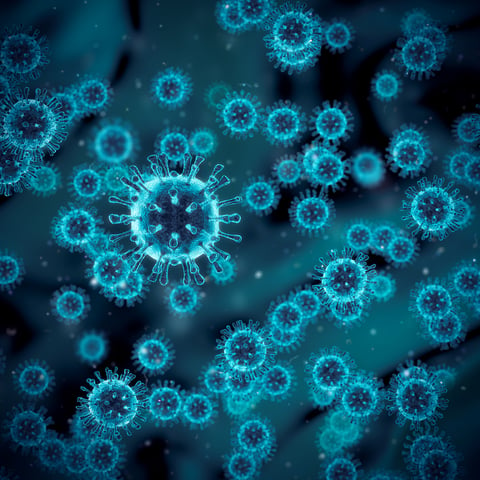
Some infectious diseases, like Zika, Dengue, and Covid-19, spread via so-called enveloped viruses, i.e. viruses surrounded by a membrane. In Prof Nam-Joon Cho’s lab at Nanyang Technological University in Singapore, they are using a surface science approach to come up with solutions to fight these diseases. They are already seeing promising results in treatments of the Zika-virus. We talked to Prof. Cho, to learn more about the research of his team.
- Viral outbreaks, like Ebola, Dengue and Zika, are reoccurring and will most likely continue to be so, says Prof. Nam-Joon Cho. That’s why we think this is important work.
With a background in engineering, Prof Cho and his research group, Engineering in Translational Science, are addressing challenges of human global health from the perspective of surface science. They work with both anti-viral strategies and anti-microbial strategies, and the goal is to come up with new ways to treat for example infectious disease. They are also working with methods to detect circulating cancer tumor cells, and in the future, they are hoping to be able to address another major human health challenge that we are facing, namely that of antibiotic resistance.
- A lot of viruses, for example, Flaviviruses, contain lipid envelopes, says Prof. Cho. The lipid envelope is kind of the wall of these viruses.
Viruses could be both enveloped and non-enveloped. In the enveloped category we find the mentioned Flaviviruses, which are mosquito-borne. Examples are Zika, Dengue, TBE, and Yellow fever. In the enveloped virus category, we also find Corona viruses, such as SARS, MERS, and Covid-19.
- First, we define the problem. Then we design a surface-based platform to solve it, says Prof. Cho.
In Prof. Cho’s team, they work with model systems that represent the real-life scenario. For example, in the Zika-project, they designed a model system that represents a viral envelope. The model system, i.e. the viral-envelope mimic, which is based on so-called liposomes, can then be used to study for example how it interacts with different molecules and how it responds to changes in the surrounding environment.
The viral envelope is a common denominator of all enveloped viruses. Identifying an antiviral strategy that targets this virus-surrounding membrane would mean that the strategy could have broad spectrum capabilities, i.e. that it would work, not only the Zika but on other enveloped viruses as well.
- We realized that a peptide could sense the curvature of the lipid envelope, and selectively lysis viruses of a size below 100 or 120 nanometers, says Prof. Cho.
In the zika-project, Prof Cho and his team discovered that a peptide, which they had engineered, could be used to rupture the viral envelope mimic. A concept which they call lipid envelope antiviral disruption (LEAD). Prof Cho uses the analogy of pricking a balloon. If such a rupture happened to a real virus, the virus would be inactivated, and the viral load in the infected individual would be reduced.
The engineered peptide selectively works on lipid-envelopes smaller than ~120 nm in diameter. This means that, in addition to the Zika virus, the treatment could be effective on viruses with a viral envelope of similar size like, for example, Dengue, Yellow fever, and Hepatitis C.
Listen to the full interview with Prof. Nam-Joon Cho in this podcast episode to learn more about how he and his team use a surface science approach for antiviral drug development.
Discover how QCM-D enables real-time, label-free analysis of supported lipid membrane formation, structure, and dynamics for advanced research
QCM-D was used to compare the potency and mechanisms of action of two different detergents in disrupting lipid membranes
Read about Prof. Jackman's experience using QCM-D to study surfactant-interaction with model membranes
Read about Prof. Jackman's experience using QCM-D in the field of membrane biophysics.
Watch the webinar to learn more about how to combine QCM-D and Neutron reflectrometry to examine membrane biochemistry at the solid-liquid Interface
Read about two cases where QSense QCM-D technology was used to explore viral membrane disruption and an antiviral strategy towards pandemic preparedness.
To characterize model membrane platforms, such as vesicles, monolayers, and bilayers, it is often necessary to use more than one analysis method.
Learn about how QSense QCM-D is used to monitor vesicle interaction with solid substrates and to characterize surface-adsorbed vesicle layers.
